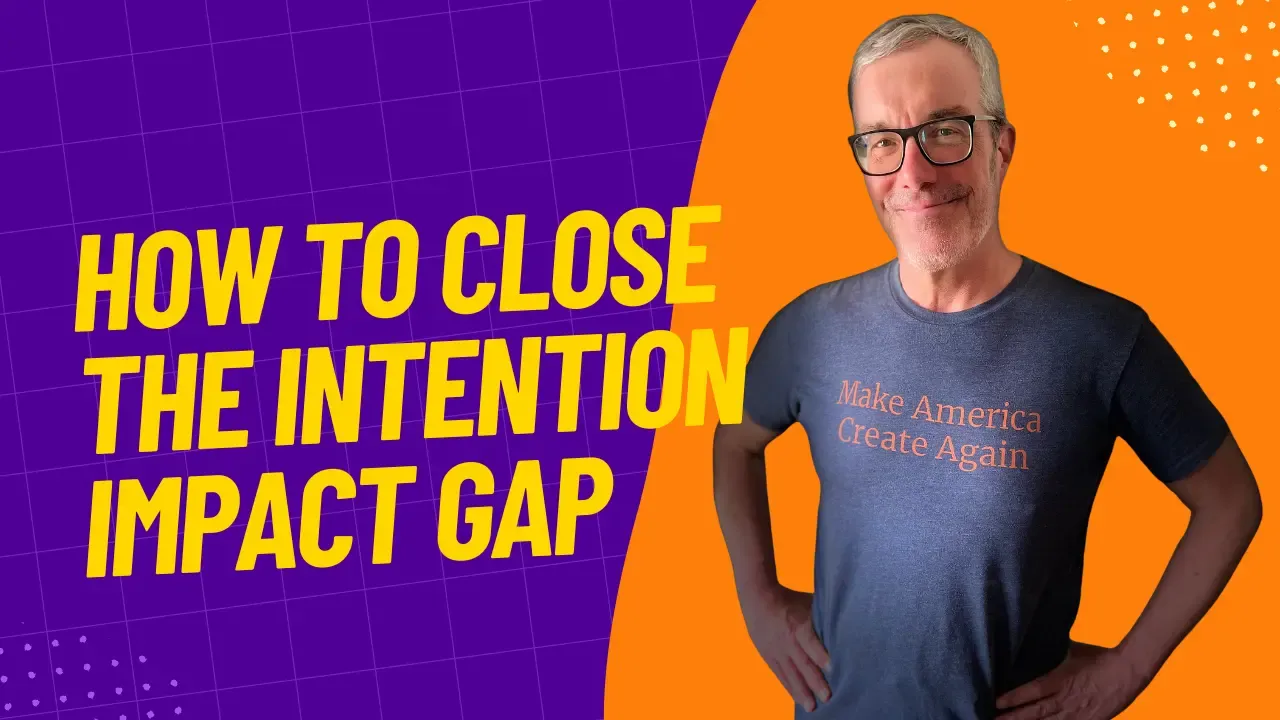Closing the Intention Impact Gap
Jan 23, 2023
Ever had your feelings hurt or been frustrated by something that was said or done to you?
Have you ever hurt someone else’s feelings or frustrated them because what you said or did was misunderstood?
Why is that?
There’s a gap between the intention of your thoughts, words, and deeds and the impact they have on others (or yourself).
And in that gap lies interpretation.
Human beings make sense of themselves, their situation, and others through storytelling, and “interpretation” is just another word for storytelling.
You’ve heard me say it many times, but it bears repeating, “choose your story, choose your future.”
It also helps to understand we are so prone to miscommunication and misinterpretation because we grossly overestimate our ability to communicate clearly and listen accurately.
Dr. Elizabeth Louise Newton illustrates this typical human behavior beautifully in her 1990 Stanford dissertation, The Rocky Road From Actions to Intentions.”
The punch line of her work is that we are victims of the narrative fallacy.
What’s the “narrative fallacy?”
Here’s my take.
First, human beings are meaning-seeking creatures. And we forge meaning through stories.
In other words, make sense of ourselves, our situation, and each other through storytelling.
And we craft these cause-and-effect narratives through the filter of all of our biases after the fact.
And since we are always the hero of our story (even when playing the victim or villain), the stories we tell ourselves are self-serving.
Even when those stories don’t serve our better nature or best interests.
Have I lost you? No surprise. Life is messy, and people are fascinating.
Nic Peterson breaks this down as clearly and cogently as I’ve ever heard.
He calls the gap between intention and impact the “adaptive dilemma” and offers three approaches to help close the gap.
- Be intentional about the language you use and keep open loops
- Avoid dogmatic thinking and embrace scientific thinking
- Don’t seek technical solutions to adaptive problems
Click here to watch Nic’s first of three videos to investigate these ideas further.
How does all this help close the intention impact gap?
Well, to close a gap, you have to understand and define that gap.
Then we can take steps to close the gap.
In what ways are you complicit in widening the gap between intention and impact in your day-to-day endeavors? What’s your strategy for bridge the gap?
Scott Perry, Encore Life Coach at Creative on Purpose
If this resonates, please share it with a friend!

